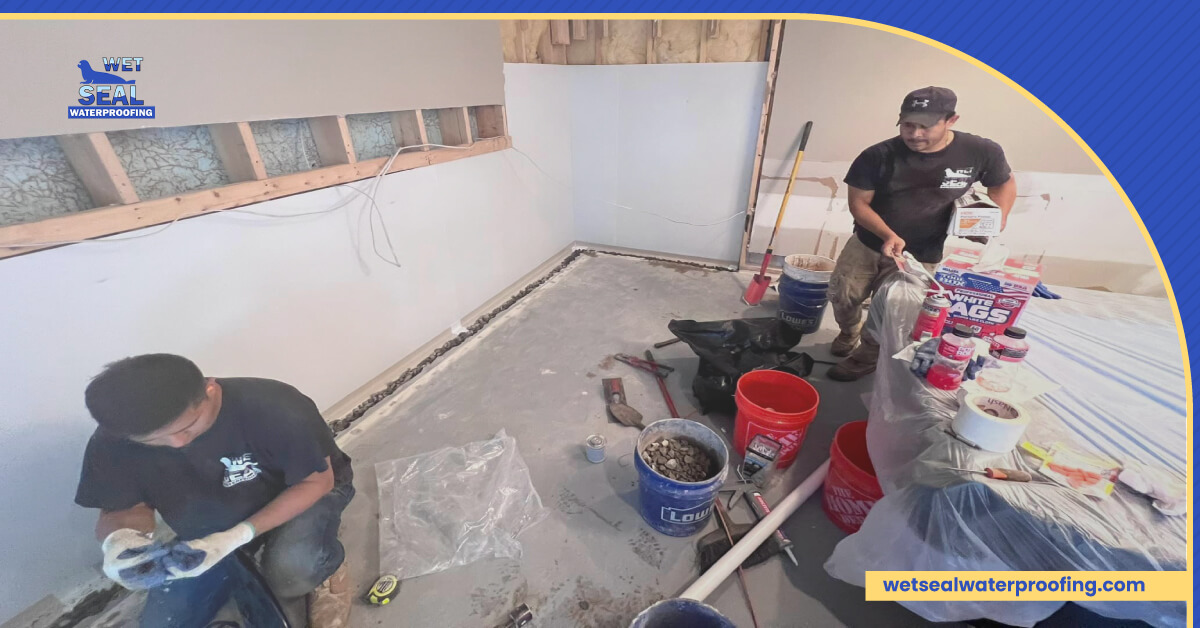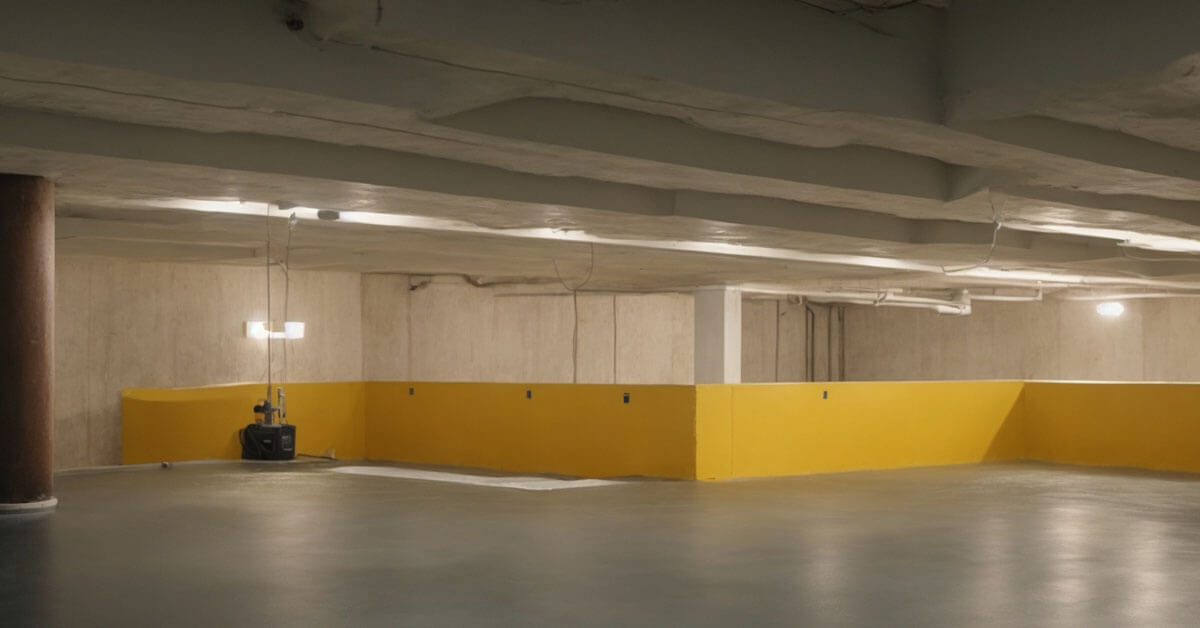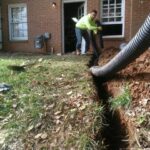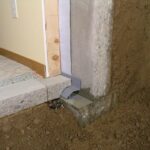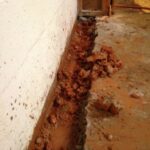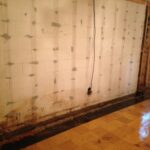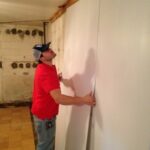A basement can be a valuable addition to your home, providing extra living space or a convenient storage area. However, it’s also one of the most vulnerable parts of your home regarding water damage. From heavy rains to hydrostatic pressure, basement moisture problems can lead to costly repairs and health hazards.
This guide will explore the crucial steps to waterproofing a basement and protecting your investment.
Understanding the Basics Steps to Waterproofing a Basement
Common Causes of Basement Moisture
Rainwater Infiltration: Rainwater can seep into your basement through cracks, gaps, and faulty windows or doors.
Hydrostatic Pressure: When the soil around your foundation becomes saturated, it exerts pressure on your basement walls, leading to leaks.
Poor Drainage: Insufficient or clogged drainage systems can redirect water towards your foundation, causing water damage.
Cracks and Gaps: Foundation cracks and gaps are entry points for water and moisture.
Signs of Basement Water Problems
Damp or Wet Walls and Floors: The most apparent sign of a basement moisture issue is visible dampness on walls or floors.
Musty Odors: Mold and mildew growth often results in a musty smell in the basement.
Mold and Mildew Growth: Excess moisture creates a breeding ground for mold and mildew.
Peeling Paint or Efflorescence: Water damage can cause paint to peel and leave white, chalky deposits known as efflorescence.
Types of Waterproofing Solutions
Interior Waterproofing: This method involves addressing water issues from inside the basement.
Exterior Waterproofing: Exterior solutions focus on preventing water from entering the foundation walls.
Combination Approaches: In some cases, a combination of both interior and exterior methods may be necessary.
Preparing for Waterproofing
Before starting the waterproofing process, it’s essential to take these steps:
Conduct a Basement Inspection: Identify the source and extent of the moisture problem.
Determine the Extent of the Issue: Assess whether you need a minor fix or a comprehensive waterproofing solution.
Gather Necessary Tools and Materials: Depending on your chosen method, gather sealants, coatings, drainage systems, or other materials.
Safety Precautions: Ensure safety by turning off electricity in the basement and wearing appropriate safety gear.
Interior Waterproofing Methods
Sealants and Coatings
Applying waterproof sealants and coatings to basement walls and floors can help create a moisture-resistant barrier.
Installing a Sump Pump
A sump pump collects and pumps out excess water from the basement, preventing flooding during heavy rains.
French Drains and Drainage Systems
French drains and interior drainage systems redirect water away from your basement, keeping it dry.
Basement Wall Panels and Vapor Barriers
Installing wall panels and vapor barriers can prevent moisture from seeping through the walls.
DIY vs. Professional Installation
Consider your DIY skills and the project’s complexity when deciding between DIY and professional installation.
Exterior Waterproofing Methods
Excavation and Drainage Systems
Exterior waterproofing involves excavating around the foundation, installing drainage systems, and applying waterproofing membranes.
Foundation Waterproofing Membranes
Waterproofing membranes create a protective barrier on the exterior foundation walls.
Proper Grading and Landscaping
Improving the grading and landscaping around your home can direct water away from the foundation.
Exterior Drainage Solutions
Installing downspout extensions and proper gutter systems can prevent water from pooling near your foundation.
Cost Considerations and Professional Help
Exterior waterproofing can be more expensive but may be necessary for severe moisture problems. Consulting with a professional is advisable.
DIY Waterproofing Tips
Repairing Minor Cracks and Gaps: Seal small cracks and gaps with waterproof caulk or epoxy.
Improving Drainage: Keep gutters and downspouts clean and ensure they direct water away from the foundation.
Choosing the Right Sealants and Coatings: Select high-quality sealants and coatings suitable for your needs.
Maintaining Gutters and Downspouts: Regular maintenance prevents water from pooling near the foundation.
Hiring a Professional Waterproofing Contractor
How to Find a Reputable Contractor: Seek recommendations, check online reviews, and verify credentials.
Getting Quotes and Estimates: Get multiple quotes and estimates to compare costs and services.
Checking References and Reviews: Contact previous clients and research the contractor’s reputation.
Questions to Ask the Contractor: Inquire about their experience, methods, warranties, and project timeline.
Basement waterproofing is crucial to your home’s longevity and your family’s health. By understanding the causes of basement moisture, recognizing the signs of water problems, and implementing the right waterproofing solutions, you can protect your basement and enjoy a dry, comfortable living space. Whether you tackle the project yourself or hire a professional, taking action to waterproof your basement is a wise decision that will pay off in the long run.
Act Now!
Contact us today to schedule a consultation with one of our experts. Explore how our services can completely revamp your Atlanta residence into a haven of cleanliness, health, and durability. Your dream home is just a single call away!”
Contact us at +1 678-920-4675 or email us at staydry@wetsealwaterproofing.com. Visit our website at www.wetsealwaterproofing.com for more information.
Stay Connected with WET SEAL WATERPROOFING on Social Media! Follow us on Instagram to stay informed and access additional updates.
Take the initial step toward a better home environment with WET SEAL Waterproofing – your trusted partner in top-notch sealed crawl space solutions!

